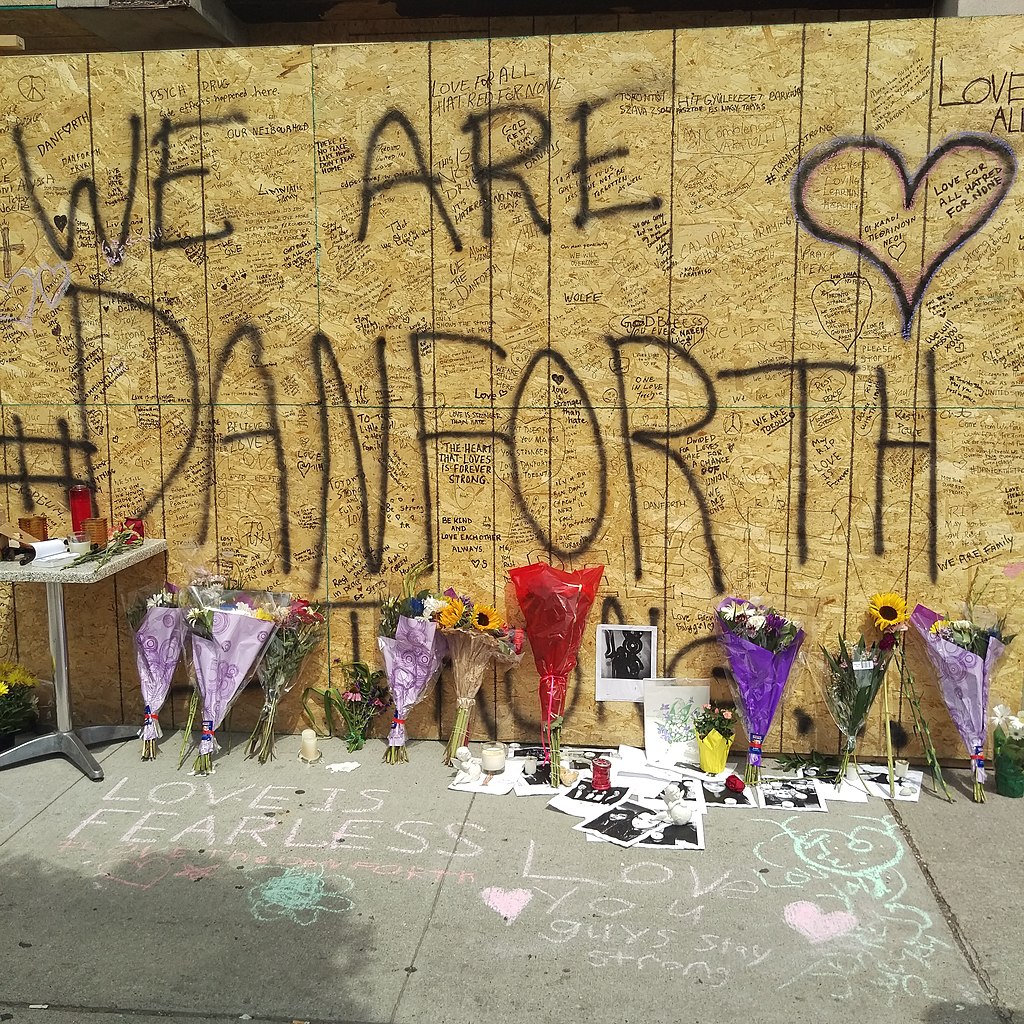Macleans
1995 Federal Budget Briefs
This article was originally published in Maclean's Magazine on March 13, 1995

Enter your search term
Signing up enhances your TCE experience with the ability to save items to your personal reading list, and access the interactive map.
Create AccountMacleans
This article was originally published in Maclean's Magazine on March 13, 1995
"https://www.thecanadianencyclopedia.ca/images/tce_placeholder.jpg?v=e9dca980c9bdb3aa11e832e7ea94f5d9" // resources/views/front/categories/view.blade.phphttps://www.thecanadianencyclopedia.ca/images/tce_placeholder.jpg?v=e9dca980c9bdb3aa11e832e7ea94f5d9

Article
2 Canadian Mechanized Brigade Group (2 CMBG) is a formation of the Canadian Army. There are eight units in the brigade group: an armoured regiment, artillery regiment, combat engineer regiment, headquarters and signals squadron, one mechanized and two light infantry battalions and a service battalion. Brigade Group headquarters is located at Petawawa, Ontario.
"https://d3d0lqu00lnqvz.cloudfront.net/ArmyUnits/badge-2-canadian-mechanized-brigade-group.jpg" // resources/views/front/categories/view.blade.phphttps://d3d0lqu00lnqvz.cloudfront.net/ArmyUnits/badge-2-canadian-mechanized-brigade-group.jpg

Article
2 Pianos 4 Hands. Two-person comedy-drama with music; semi-autobiographical show by the pianists-playwrights Ted Dykstra (b Chatham, Ont 1961) and Richard Greenblatt (b Montreal, 1952 or 1953).
"https://www.thecanadianencyclopedia.ca/images/tce_placeholder.jpg?v=e9dca980c9bdb3aa11e832e7ea94f5d9" // resources/views/front/categories/view.blade.phphttps://www.thecanadianencyclopedia.ca/images/tce_placeholder.jpg?v=e9dca980c9bdb3aa11e832e7ea94f5d9

Article
The first FIFA Women’s World Cup to be held in Canada, and only the third in North America, the 2015 tournament was the largest and most watched in Women’s World Cup history.
"https://www.thecanadianencyclopedia.ca/images/tce_placeholder.jpg?v=e9dca980c9bdb3aa11e832e7ea94f5d9" // resources/views/front/categories/view.blade.phphttps://www.thecanadianencyclopedia.ca/images/tce_placeholder.jpg?v=e9dca980c9bdb3aa11e832e7ea94f5d9

Article
Minutes before 10:00 p.m. on Sunday 22 July 2018, a 29-year-old man walked into a busy Toronto neighbourhood and began shooting people indiscriminately. He walked along Danforth Avenue, shooting others before exchanging gunfire with police and turning his handgun on himself. The shooter killed 18-year-old Reese Fallon and 10-year-old Julianna Kozis and left 13 people injured. The rampage led to calls for more gun control in Canada.
"https://d3d0lqu00lnqvz.cloudfront.net/media/new_article_images/DanforthShooting/1024px-The_restaurant_involved_in_2018_Danforth_Shooting.jpg" // resources/views/front/categories/view.blade.phphttps://d3d0lqu00lnqvz.cloudfront.net/media/new_article_images/DanforthShooting/1024px-The_restaurant_involved_in_2018_Danforth_Shooting.jpg

Article
At 1:24 p.m. on 23 April 2018, a 25-year-old man who identified as an incel (involuntary celibate), drove a rented van onto the sidewalk on Yonge Street in Toronto’s North York business district. He proceeded to drive south, intentionally running over pedestrians. When he was stopped by police 10 minutes later, 10 people (eight of them women) were dead and 16 injured. It was the biggest mass murder in Toronto history and the worst in Canada since the Montreal massacre in 1989. On 3 March 2021, the driver was found guilty of 10 counts of first-degree murder and 16 counts of attempted murder. His sentencing process is scheduled to begin on 11 January 2022.
"https://d3d0lqu00lnqvz.cloudfront.net/media/new_article_images/TorontoVanAttack/40917908825_1ec9d3c204_k.jpg" // resources/views/front/categories/view.blade.phphttps://d3d0lqu00lnqvz.cloudfront.net/media/new_article_images/TorontoVanAttack/40917908825_1ec9d3c204_k.jpg

Article
Late in the evening on Saturday, 18 April 2020, a 51-year-old man assaulted his common-law wife in Portapique, Nova Scotia. He then began a 13-hour rampage in which he committed multiple shootings and set fire to several homes in 16 locations. Using a vehicle disguised as an RCMP police cruiser and wearing an old RCMP uniform for much of the time, the killer murdered 22 people and injured six others. He was shot and killed by two RCMP officers at a gas station south of Enfield, Nova Scotia, 100 km from where the violence began. It is the worst mass killing in modern Canadian history. This article contains sensitive material that may not be suitable for all audiences.
"https://d3d0lqu00lnqvz.cloudfront.net/media/new_article_images/2020NovaScotiaAttacks/1280px-2020_Nova_Scotia_Attacks_Memorial_to_the_Victims.jpg" // resources/views/front/categories/view.blade.phphttps://d3d0lqu00lnqvz.cloudfront.net/media/new_article_images/2020NovaScotiaAttacks/1280px-2020_Nova_Scotia_Attacks_Memorial_to_the_Victims.jpg

Article
Directed by Bernard Émond and released in 2003, 20h17 rue Darling, like Émond’s earlier film La femme qui boit, confronts us with the disastrous effects of alcoholism.
"https://www.thecanadianencyclopedia.ca/images/tce_placeholder.jpg?v=e9dca980c9bdb3aa11e832e7ea94f5d9" // resources/views/front/categories/view.blade.phphttps://www.thecanadianencyclopedia.ca/images/tce_placeholder.jpg?v=e9dca980c9bdb3aa11e832e7ea94f5d9

Macleans
This article was originally published in Maclean’s magazine on April 4, 2005. Partner content is not updated. IT WAS 5 A.M., just west of Sudbury, and Terry FOX was having his first fight of the day. I'd yet to meet the guy, except for a friendly nod as he left his motel room for the Marathon of Hope van to take up his run where he'd stopped the day before.
"https://www.thecanadianencyclopedia.ca/images/tce_placeholder.jpg?v=e9dca980c9bdb3aa11e832e7ea94f5d9" // resources/views/front/categories/view.blade.phphttps://www.thecanadianencyclopedia.ca/images/tce_placeholder.jpg?v=e9dca980c9bdb3aa11e832e7ea94f5d9

Article
Other collectives at this time included If You're So Good Why Are You in Saskatoon? (1975), directed by Paul Thompson; and Generation and 1/2 (1978), a continuation of the Paper Wheat story of the Wheat Pool.
"https://d3d0lqu00lnqvz.cloudfront.net/media/media/f9d77b5f-0959-4d7f-bdc3-d847612420ea.jpg" // resources/views/front/categories/view.blade.phphttps://d3d0lqu00lnqvz.cloudfront.net/media/media/f9d77b5f-0959-4d7f-bdc3-d847612420ea.jpg

List
To celebrate its 30th anniversary, The Canadian Encyclopedia created 30 lists of 30 things that make us proud to be Canadian, from famous people and historic events, to iconic foods and influential artists.
"https://d3d0lqu00lnqvz.cloudfront.net/media/media/a7c708ef-3e7b-4890-a1ad-f637397985a6.jpg" // resources/views/front/categories/view.blade.phphttps://d3d0lqu00lnqvz.cloudfront.net/media/media/a7c708ef-3e7b-4890-a1ad-f637397985a6.jpg

List
To celebrate its 30th anniversary, The Canadian Encyclopedia created 30 lists of 30 things, from famous people and historic events, to iconic foods and influential artists.
"https://d3d0lqu00lnqvz.cloudfront.net/media/media/a7c708ef-3e7b-4890-a1ad-f637397985a6.jpg" // resources/views/front/categories/view.blade.phphttps://d3d0lqu00lnqvz.cloudfront.net/media/media/a7c708ef-3e7b-4890-a1ad-f637397985a6.jpg

List
To celebrate its 30th anniversary, The Canadian Encyclopedia created 30 lists of 30 things that have helped define our identity, from famous people and historic events, to iconic foods and influential artists.
"https://d3d0lqu00lnqvz.cloudfront.net/media/media/a7c708ef-3e7b-4890-a1ad-f637397985a6.jpg" // resources/views/front/categories/view.blade.phphttps://d3d0lqu00lnqvz.cloudfront.net/media/media/a7c708ef-3e7b-4890-a1ad-f637397985a6.jpg

List
To celebrate its 30th anniversary, The Canadian Encyclopedia created 30 lists of 30 things that have helped define our identity, from famous people and historic events, to iconic foods and influential artists.
"https://d3d0lqu00lnqvz.cloudfront.net/media/media/a7c708ef-3e7b-4890-a1ad-f637397985a6.jpg" // resources/views/front/categories/view.blade.phphttps://d3d0lqu00lnqvz.cloudfront.net/media/media/a7c708ef-3e7b-4890-a1ad-f637397985a6.jpg

List
To celebrate its 30th anniversary, The Canadian Encyclopedia created 30 lists of 30 things that make us proud to be Canadian, from famous people and historic events, to iconic foods and influential artists.
"https://d3d0lqu00lnqvz.cloudfront.net/media/media/a7c708ef-3e7b-4890-a1ad-f637397985a6.jpg" // resources/views/front/categories/view.blade.phphttps://d3d0lqu00lnqvz.cloudfront.net/media/media/a7c708ef-3e7b-4890-a1ad-f637397985a6.jpg
